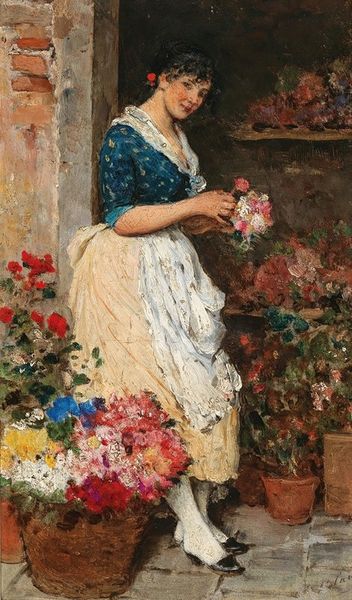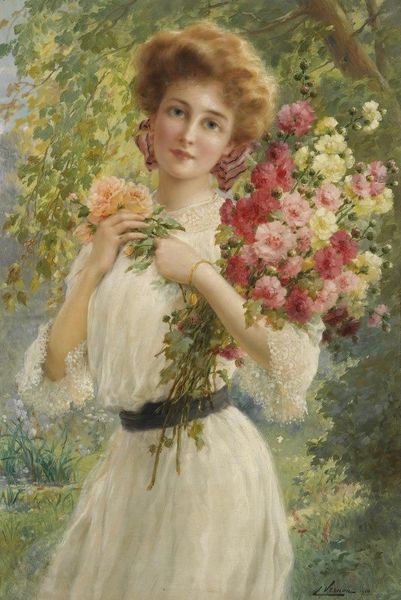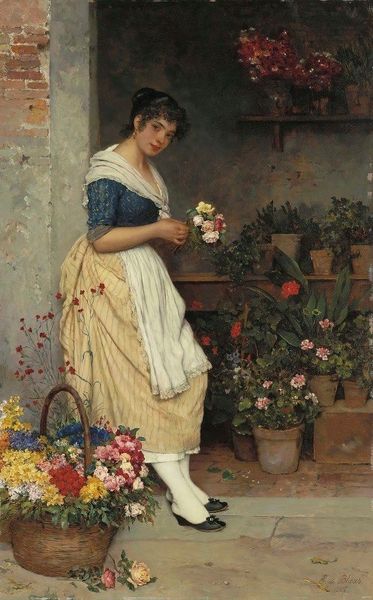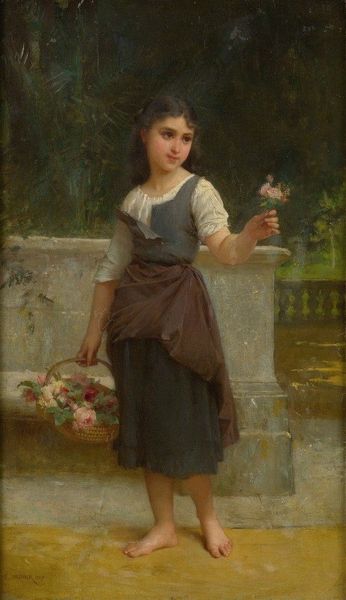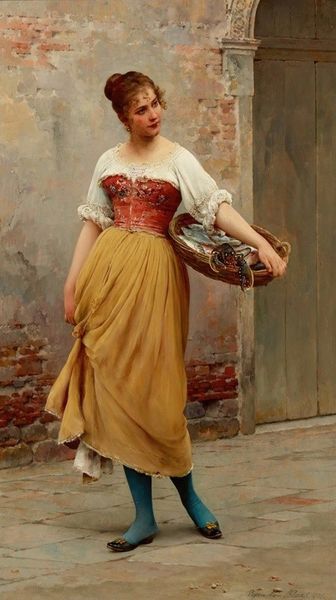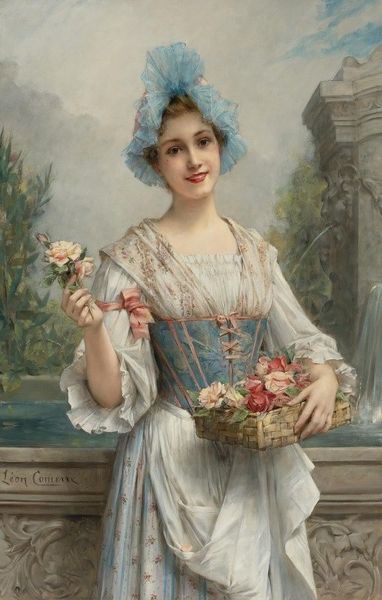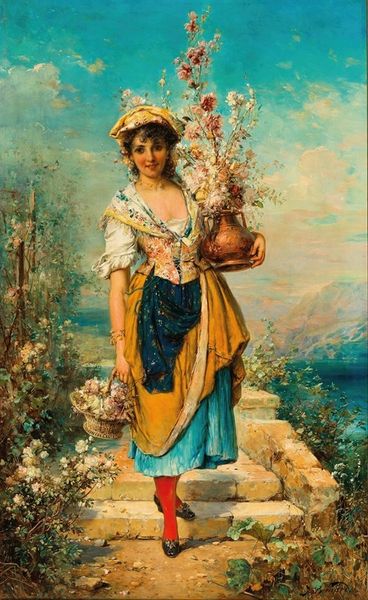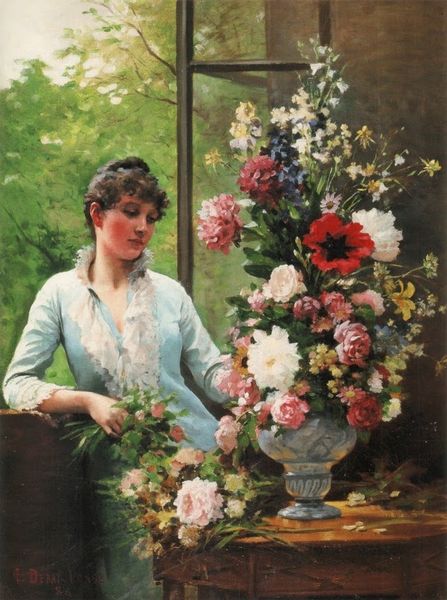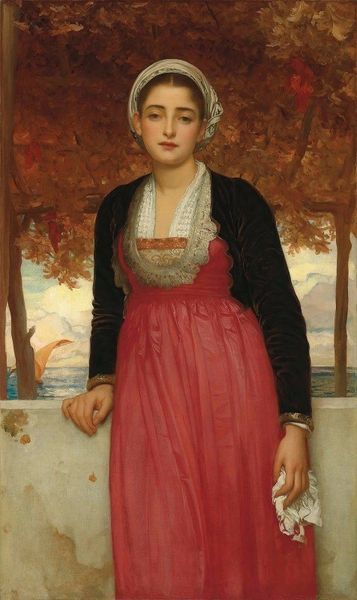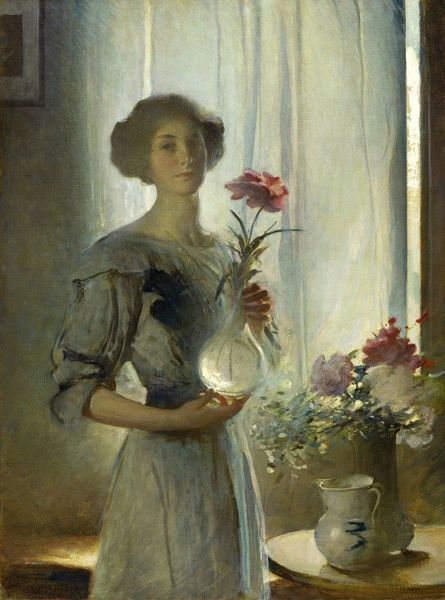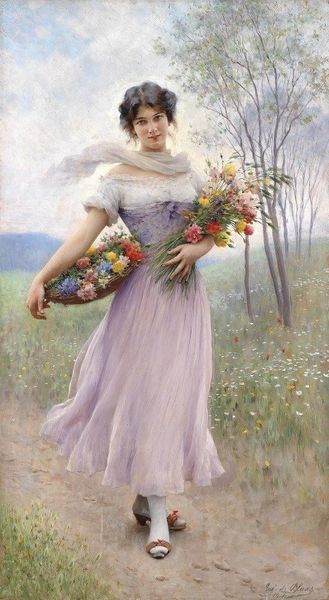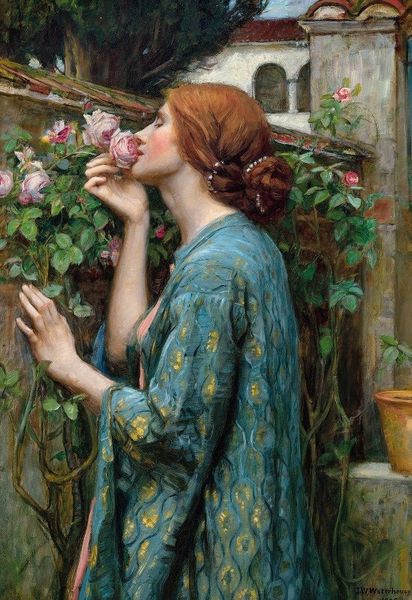
Copyright: Public Domain: Artvee
Curator: Oh, isn't this charming? It's Frederick Arthur Bridgman's "Young Niçoise with a Basket," painted in Nice, in 1917. Oil on canvas. Editor: It has such a luminous, sun-drenched feel. Like a perfect Mediterranean afternoon captured in paint. Curator: Bridgman had quite the affinity for North Africa and the Mediterranean, and this painting reflects his attraction to scenes of everyday life. The composition places a young woman centrally, carrying a basket overflowing with vibrant citrus, probably oranges from the area. It's an almost idyllic scene, wouldn’t you say? Editor: Yes, but beneath the surface, I wonder about its context. Painted in 1917, amid the First World War, this image feels incredibly removed. Is it escapism, or is it reinforcing a certain romanticized colonial view? Were these kind of idealized portraits popular with a specific buying audience perhaps? Curator: That’s a great point. There's a detachment. Bridgman wasn’t French. He was an American, documenting what was picturesque and pleasing to him. The shawl the young girl wears, with her traditional skirt, all set against the backdrop of stone walls, is an exoticization for consumption, wouldn't you agree? It almost idealizes a very staged type of rural life. Editor: I think so. But still, as a purely aesthetic object, I keep being drawn to the play of light and shadow on the walls and the basket's bursting colors. Bridgman certainly had an eye for detail. And, you have to remember it's not her portrait but the portrait of a region he loved, which explains the setting more so than the actual girl, don't you think? Curator: Very well said! I think this piece invites us to question our own projections when encountering art from different periods and contexts, what the artists intend compared to how it comes across in other environments. Editor: Absolutely. And to consider how the art market and broader social currents shape what is seen, celebrated, and, perhaps most importantly, collected.
Comments
No comments
Be the first to comment and join the conversation on the ultimate creative platform.
